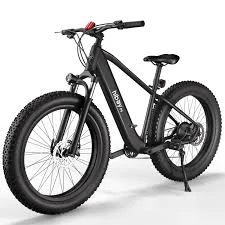
- Afrikaans
- Albanian
- Amharic
- Arabic
- Armenian
- Azerbaijani
- Basque
- Belarusian
- Bengali
- Bosnian
- Bulgarian
- Catalan
- Cebuano
- Corsican
- Croatian
- Czech
- Danish
- Dutch
- English
- Esperanto
- Estonian
- Finnish
- French
- Frisian
- Galician
- Georgian
- German
- Greek
- Gujarati
- Haitian Creole
- hausa
- hawaiian
- Hebrew
- Hindi
- Miao
- Hungarian
- Icelandic
- igbo
- Indonesian
- irish
- Italian
- Japanese
- Javanese
- Kannada
- kazakh
- Khmer
- Rwandese
- Korean
- Kurdish
- Kyrgyz
- Lao
- Latin
- Latvian
- Lithuanian
- Luxembourgish
- Macedonian
- Malgashi
- Malay
- Malayalam
- Maltese
- Maori
- Marathi
- Mongolian
- Myanmar
- Nepali
- Norwegian
- Norwegian
- Occitan
- Pashto
- Persian
- Polish
- Portuguese
- Punjabi
- Romanian
- Russian
- Samoan
- Scottish Gaelic
- Serbian
- Sesotho
- Shona
- Sindhi
- Sinhala
- Slovak
- Slovenian
- Somali
- Spanish
- Sundanese
- Swahili
- Swedish
- Tagalog
- Tajik
- Tamil
- Tatar
- Telugu
- Thai
- Turkish
- Turkmen
- Ukrainian
- Urdu
- Uighur
- Uzbek
- Vietnamese
- Welsh
- Bantu
- Yiddish
- Yoruba
- Zulu
Nov . 11, 2024 17:58 Back to list
types of mountain bikes
Types of Mountain Bikes A Comprehensive Guide
Mountain biking is a thrilling and challenging sport that allows riders to explore rugged terrains while enjoying the great outdoors. Different types of mountain bikes are designed to cater to various riding styles, terrains, and skill levels. Understanding these types can significantly enhance your biking experience and ensure you choose the right bike for your adventures. In this article, we'll explore the main types of mountain bikes, highlighting their characteristics and ideal uses.
1. Cross-Country (XC) Bikes
Cross-country bikes are designed for speed and efficiency, suited for smooth trails and long-distance rides. These bikes typically feature lightweight frames made from aluminum or carbon fiber, which allows for quick acceleration and easy climbing. They usually come with a hardtail design (front suspension only) or full suspension, but the latter tends to be more common in higher-end models. XC bikes have narrow tires and a geometry that favors climbing, making them ideal for competitive riders and fitness enthusiasts who enjoy racing over smooth terrain.
2. Trail Bikes
Trail bikes strike a balance between climbing efficiency and descending capability, making them an excellent choice for the average mountain biker. They usually feature a full suspension system, providing better shock absorption and comfort on rough trails. The geometry of trail bikes is designed to handle steep descents and technical obstacles while still being capable of climbing efficiently. With versatile tire widths and varying suspension travel (around 120-150 mm), trail bikes are best for riders who enjoy a mix of climbing and descending on diverse terrains.
3. All-Mountain (Enduro) Bikes
All-mountain bikes, often referred to as enduro bikes, are built for those who gleefully tackle demanding descents while ensuring they can climb back up. These bikes offer increased suspension travel (typically between 150-170 mm), making them better suited for rougher terrains and steeper gradients. The geometry of all-mountain bikes is more aggressive than trail bikes, promoting stability at high speeds and during technical descents. These bikes often have features such as dropper posts, wider tires, and robust builds, catering to riders who want to conquer challenging trails and downhill sections.
types of mountain bikes

4. Downhill Bikes
Downhill bikes are purpose-built for steep descents, providing maximum stability and control on rugged downhill courses. They come with a long wheelbase and slack angles, which help absorb shocks and maintain traction on steep slopes. These bikes typically feature heavy-duty components and long-travel suspension (around 200 mm), designed to handle extreme abuse. However, downhill bikes are not meant for climbing; they are heavy and often require transport to the top of the trails via lifts or shuttle services. Riders who seek adrenaline-pumping downhill runs and park riding will find downhill bikes to be the best fit.
5. Fat Bikes
Fat bikes are designed for riding on soft, unstable surfaces such as snow, sand, and mud. They are characterized by their wide tires (usually 3.7 inches or wider) that provide increased traction and flotation. With a unique design that can accommodate low tire pressure, fat bikes excel in conditions where traditional mountain bikes would struggle. They are versatile and can be used in diverse environments, making them popular for year-round riding, regardless of weather conditions.
6. Electric Mountain Bikes (e-MTBs)
Electric mountain bikes are an emerging trend combining traditional mountain biking with electric assist technology. These bikes come equipped with a battery-powered motor that assists with pedaling, allowing riders to tackle challenging terrains with less effort. Available in various styles from trail to fat bikes, e-MTBs provide a fantastic alternative for older riders or those who may struggle with physical exertion but still want to enjoy the thrill of mountain biking.
In conclusion, choosing the right type of mountain bike depends on your riding style, the terrain you'll be tackling, and your personal preferences. By understanding the distinctions between cross-country, trail, all-mountain, downhill, fat bikes, and electric mountain bikes, you can make an informed decision and find the perfect bike for your next adventure. Happy riding!
-
The Ultimate Kids' Four-Wheeler Experience
NewsJul.09,2025
-
The Ultimate Guide to Mountain Bikes: Gear Up for Your Ride
NewsJul.09,2025
-
The New Age of Cycling: Electric Bikes for Every Rider
NewsJul.09,2025
-
The Best Kids Bicycles: Ride in Style and Safety
NewsJul.09,2025
-
The Best 3-Wheel Scooters for Kids: Fun, Safety, and Adventure
NewsJul.09,2025
-
Revolutionize Your Ride: Affordable Electric Bikes
NewsJul.09,2025
-
Finding the Perfect Mountain Bike for Every Rider
NewsJul.09,2025



